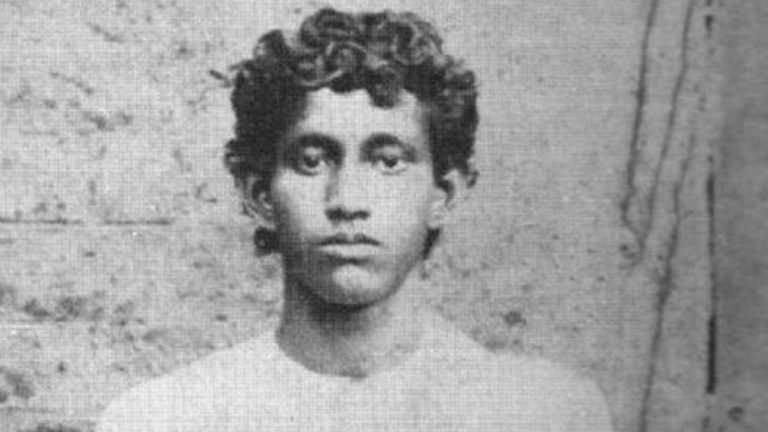Amit Shah visited Midnapore the native village of Bengali revolutionary Khudiram Bose, one of the youngest leaders of the independence movement, Bose is highly regarded in Bengal for his fearless spirit. However, Khudiram’s legacy has been largely limited to Bengal.

“Khudiram Bose belongs to all of India and not just West Bengal,” said Shah as he met with Bose’s family members and felicitated them with honorary garbs. The home minister is on a two-day tour of West Bengal to take stock of BJP’s affairs in the state ahead of assembly elections next year.
He is most remembered for his attempt to assassinate the British judge, Magistrate Douglas Kingsford, which ultimately led him to be sentenced to death at the young age of 18.
Bose was born in 1889 in a small village in the Midnapore district. From his adolescent years, he was drawn towards revolutionary activities, being inspired by a series of public lectures given by Sri Aurobindo and Sister Nivedita, when the duo visited Midnapore in the early 1900s.
In 1905, when Bengal was partitioned, he actively participated in protests against the British. At the age of 15, Bose joined the Anushilan Samiti, an early 20th-century organization that propounded revolutionary activities in Bengal. Within a year, he had learned how to make bombs and would plant them in front of police stations.
The deciding moment of Bose’s life came in 1908 when he along with another revolutionary, Prafulla Chaki was assigned the task of assassinating the district magistrate of Muzaffarpur, Kingsford. Before being transferred to Muzaffarpur, Kingsford was a magistrate in Bengal. His tortuous clamping down on revolutionaries had earned him the ire of this young group of nationalists who decided to hurl a bomb on him.
There were multiple attempts to assassinate Kingsford. Initially, the plan was to throw the bomb in the court. However, after much deliberation, it was decided to avoid the court since a lot of civilians might get injured. Thereafter, on April 30, 1908, Bose threw a bomb on a carriage that he suspected was carrying Kingsford. But it turned out that it was carrying the wife and daughter of a barrister named Pringle Kennedy, who lost their lives, as Kingsford escaped.
By midnight the entire town was aware of the incident and the Calcutta police were summoned to catch the duo. Bose was arrested from a railway station called Waini where he had reached the next morning after having walked 25 miles. Chaki on the other hand, killed himself before he could get arrested.
As Bose was brought handcuffed to the police station at Muzaffarpur, the entire town crowded around to take a look at the teenaged boy. The following morning’s Statesman carried a vivid account of the scene as it reported, “The railway station was crowded to see the boy. A mere boy of 18 or 19 years old, who looked quite determined. He came out of a first-class compartment and walked all the way to the phaeton, kept for him outside, like a cheerful boy who knows no anxiety. While sitting the boy cheerfully cried ‘Vandemataram’. ” Bose took full responsibility for the incident.
On May 21, 1908, the historic trial of Bose began presided by Judge Corndoff, Nathuni Prasad, and Janak Prasad in the Jury. Bose’s lawyer Narendra Kumar argued that he was too young to be able to make bombs. However, the judges had evidence of more revolutionary activities planned.
Bose was finally sentenced to death on July 13, 1908. When the English judge asked him if he understood the meaning of the sentence, Bose is known to have smiled and calmly said, “Yes, I do and my lawyer said that I was too young to make bombs. If you allow me some time before taken away from here, I can teach you the skills of making bombs too. ” Soon after, the streets of Calcutta swelled up in large protests by the student community for several days. He was executed on August 11, 1908.

